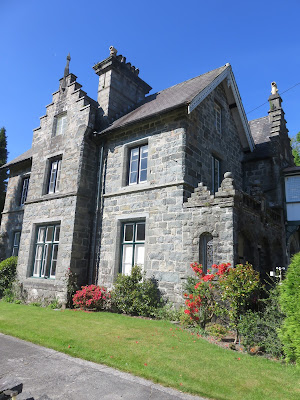
The Welsh name for the area is Caergybi. Caer, meaning fort, for the fort the Romans built here in the 4th century, and Gybi from Cybi, the name of the Cornish monk who in 540 founded a monastery here, incorporating the walls of the Roman fort into the structure. Cybi was given the land by Maelgwn the Great, the "dragon" of my Dragon of the Island series.
The English name for the town and area, Holyhead, also combines two words. "Head" for headland and "Holy" because of Cybi's monastery.
The church of St. Cybi was sacked by the Vikings in the 10th century, damaged by Henry IV's army in the 15th century in an assault on the holdings of the Welsh prince Owain Glydwr and much of the interior destroyed by Cromwell's army in the 17th century. Despite this, most of the church remain intact.
 Rather incongruously, the ancient Roman walls and church are right in the center of the town, not far from a bridal shop and other modern stores and businesses.
Rather incongruously, the ancient Roman walls and church are right in the center of the town, not far from a bridal shop and other modern stores and businesses.Today the coast is guarded by the picturesque Southstack Lighthouse, built in 1809, and Elin's Tower, built in the mid-1800's as a summer home for a local family.
Elin's Tower is now used as a visitors center for the nearby nature reserve. Forty different bird species were sighted here this last season, including puffins, like this one on closed caption TV in the visitors center.
Until recently the voyage across the Irish Sea might have been made in a coracle, a hide and wicker boat like this one. The journey probably would have taken two days.




















































